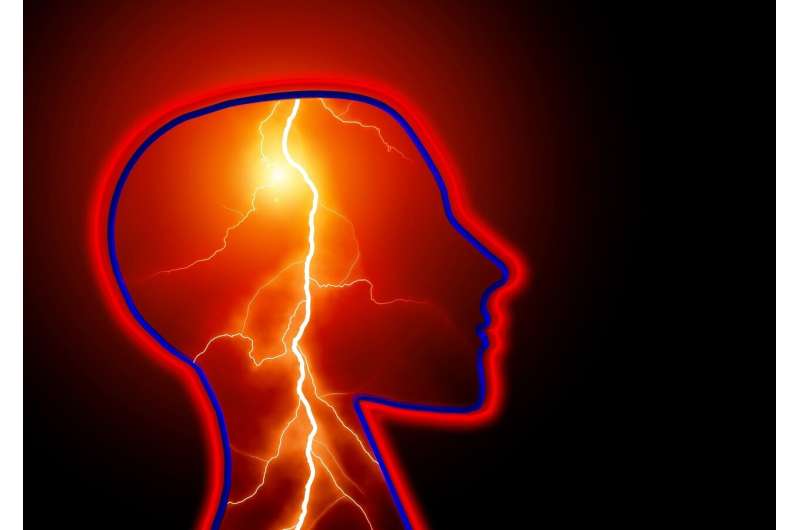This article has been reviewed according to Science X's editorial process and policies. Editors have highlighted the following attributes while ensuring the content's credibility:
fact-checked
trusted source
proofread
Hispanic communities empowered: Understanding the R.Á.P.I.D.O. acronym saves lives from stroke

When someone has a stroke, every second counts. Identifying the symptoms and calling 911 quickly can make the difference between life and death or long-term disability. According to American Stroke Association stroke survey data, only 39% of Hispanic-Latino consumers said they were familiar with the English stroke warning sign acronym, F.A.S.T., and only 42% could correctly name two stroke warning signs unaided.
To help close the gap between knowledge and action, the American Stroke Association, a division of the American Heart Association, is launching Juntos Contra el Derrame Cerebral, a culturally relevant Spanish-language campaign to raise awareness among Spanish-dominant audiences around the use and understanding of R.Á.P.I.D.O., a Spanish acronym for stroke warning signs that can help save lives.
Hispanic-Latino adults in the U.S. have a higher risk of stroke due to unmanaged risk factors, limited access to health care, lower health literacy rates, cultural barriers and socioeconomic determinants of health. Hispanic-Latino stroke patients also have longer delay times to hospital arrival than non-Hispanic stroke patients, greater stroke severity and poorer outcomes following stroke.
Juntos Contra el Derrame Cerebral aims to increase awareness of R.Á.P.I.D.O., address health disparities and ultimately improve stroke outcomes in the Hispanic-Latino community. The acronym is constructed to teach the five warning signs of stroke and the need to call 911 for quick medical response.
The Association seeks to empower the Hispanic-Latino community to learn the stroke warning signs and what to do using the R.Á.P.I.D.O. acronym. This approach considers the community's unique cultural and linguistic needs, facilitating better comprehension and response to stroke symptoms. The easy-to-remember acronym stands for:
- R—Rostro caído (Face drooping)
- Á—Alteración del equilibrio (Loss of Balance, or Lack of Coordination)
- P—Pérdida de fuerza en el brazo (Arm weakness)
- I—Impedimento visual repentino (Sudden vision difficulty)
- D—Dificultad para hablar (Slurred or Strange Speech)
- O—Obtén ayuda, llama al 911 (Get help, call 911)
Projections show that by 2030, the prevalence of stroke among Hispanic men will increase by 29%.The Association's adoption and promotion of R.Á.P.I.D.O. represents significant steps in addressing the lack of awareness of the increased risk of stroke faced by Hispanic-Latino people in the U.S., a group already disproportionately impacted.
"R.Á.P.I.D.O. is a tool that can help save lives," said José Biller, M.D., an American Stroke Association volunteer expert and professor and chair of Neurology at Loyola University Chicago's Stritch School of Medicine. "The language barrier is among the most significant barriers to health care access and quality. Understanding which Spanish acronym resonated best with Spanish-speaking communities addresses this barrier while increasing stroke awareness and improving outcomes for all."
The R.Á.P.I.D.O. acronym was developed by a group of stroke experts at UTHealth Houston, many of whom are also American Stroke Association volunteers. The Association conducted scientific research to test the acronym's effectiveness among Hispanic-Latino people who speak only or predominantly Spanish.
"The research to identify which Spanish acronym worked best for the Hispanic-Latino community was critical because the acronym reminds people what to look for and to 'act fast' when they are having a stroke or see someone having one. These symptoms are sudden and must be recognized quickly for the person to receive the appropriate treatment as soon as possible," said Jennifer Beauchamp, Ph.D., R.N., an associate professor at Cizik School of Nursing and the UTHealth Houston Institute for Stroke and Cerebrovascular Disease.
Beauchamp, who led a team of nursing students who came up with the idea for the acronym, is an American Stroke Association volunteer expert.
Achieving health equity requires a multifaceted approach, including targeted education, accessible resources and community engagement. The American Stroke Association's Juntos Contra el Derrame Cerebral campaign includes a public service announcement highlighting R.Á.P.I.D.O., featuring Miami stroke survivor and Association volunteer Noelia Gutierrez.
A catchy jingle that helps people memorize R.Á.P.I.D.O. and social and digital assets have also been developed to raise awareness about stroke and the importance of timely response within the Hispanic-Latino community.
By leveraging the cultural relevance of R.Á.P.I.D.O. and spreading awareness about stroke prevention within the Hispanic-Latino community, the Association, along with individuals, health care professionals, community organizations and more, aims to increase knowledge of stroke signs, symptoms, immediate management and modifiable risk factors of stroke, helping bridge the gap in stroke disparities and work towards achieving health equity for all people.



















